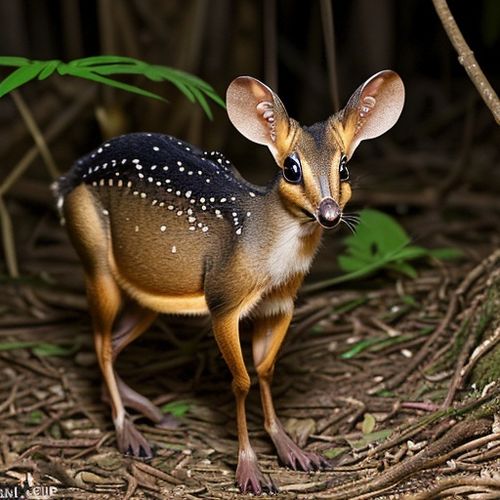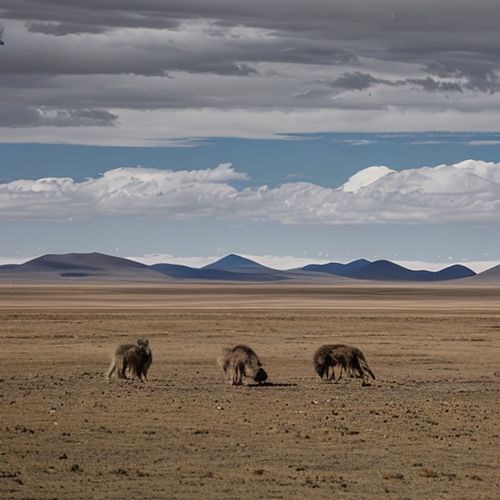The Philippines, an archipelago renowned for its breathtaking landscapes and rich biodiversity, is home to one of nature's most awe-inspiring giants—the Philippine Giant Coconut Tree, or Cocos nucifera. Towering over the lush tropical forests, these majestic palms are not just a testament to the country's vibrant flora but also a cultural and economic cornerstone for many local communities. Their sheer size and resilience have fascinated botanists and travelers alike, making them a symbol of the Philippines' natural grandeur.
Standing at heights of up to 30 meters, the Philippine Giant Coconut Tree dwarfs its more common relatives. Its trunk, thick and robust, can withstand the fierce typhoons that frequently batter the islands. The leaves, often stretching over 5 meters in length, create a canopy that provides shade and shelter for countless species of birds and insects. Unlike the dwarf varieties cultivated for commercial purposes, these giants are often found in wild, undisturbed areas, where they have thrived for centuries.
The ecological significance of these trees cannot be overstated. They play a vital role in maintaining the health of coastal and lowland ecosystems. Their extensive root systems help prevent soil erosion, a critical function in a country prone to heavy rains and flooding. Moreover, the trees serve as natural windbreakers, protecting villages and farmland from the destructive forces of tropical storms. The leaves and husks, when they fall, decompose into nutrient-rich organic matter, fostering the growth of other plants in the vicinity.
For generations, the Philippine Giant Coconut Tree has been deeply intertwined with the lives of the Filipino people. Every part of the tree is utilized, embodying the resourcefulness of local communities. The trunk is carved into durable timber for construction, while the leaves are woven into roofs, mats, and baskets. The sap, known as tuba, is harvested to produce a traditional alcoholic beverage, and the coconuts themselves provide food, oil, and milk. In many rural areas, the tree is affectionately called the "Tree of Life," a nod to its myriad uses.
Despite their cultural and environmental importance, these towering palms face growing threats. Deforestation, driven by urban expansion and agricultural conversion, has led to a decline in their numbers. Climate change, with its rising temperatures and unpredictable weather patterns, further exacerbates the challenges. Conservation efforts are underway, with local NGOs and government agencies working to protect remaining stands of these giants. Reforestation projects and community education programs aim to ensure that future generations can continue to marvel at these natural wonders.
Tourists visiting the Philippines often seek out these colossal trees, eager to witness their grandeur firsthand. Locations like the Bicol Region and Quezon Province are known for their dense groves of Giant Coconut Trees, offering visitors a glimpse into the country's rich botanical heritage. Guided tours and eco-tourism initiatives have emerged, providing sustainable ways to appreciate these trees while supporting local economies. For many, standing beneath the towering fronds of a centuries-old Giant Coconut Tree is a humbling experience, a reminder of nature's enduring power.
Scientific research into the Philippine Giant Coconut Tree has also gained momentum in recent years. Botanists are studying its genetic makeup, hoping to unlock secrets that could enhance the resilience of other coconut varieties. Its ability to thrive in harsh conditions, such as saline soils and high winds, makes it a valuable subject for agricultural innovation. By understanding and preserving this species, researchers believe they can contribute to global food security and sustainable farming practices.
The story of the Philippine Giant Coconut Tree is one of resilience, utility, and beauty. It stands as a living monument to the harmony between nature and human life, a relationship that has shaped the identity of the Filipino people. As the world grapples with environmental challenges, these trees offer a lesson in sustainability and adaptation. Protecting them is not just about preserving a species—it's about safeguarding a legacy that has endured for centuries.

By Olivia Reed/Apr 28, 2025

By Emma Thompson/Apr 28, 2025

By Samuel Cooper/Apr 28, 2025

By Grace Cox/Apr 28, 2025

By George Bailey/Apr 28, 2025

By Rebecca Stewart/Apr 28, 2025

By George Bailey/Apr 28, 2025

By Olivia Reed/Apr 28, 2025

By Eric Ward/Apr 28, 2025

By Benjamin Evans/Apr 28, 2025

By Amanda Phillips/Apr 28, 2025

By Sophia Lewis/Apr 28, 2025

By Christopher Harris/Apr 28, 2025

By Benjamin Evans/Apr 28, 2025

By Rebecca Stewart/Apr 28, 2025

By David Anderson/Apr 28, 2025

By Olivia Reed/Apr 28, 2025

By Lily Simpson/Apr 28, 2025

By Emma Thompson/Apr 28, 2025

By Laura Wilson/Apr 28, 2025